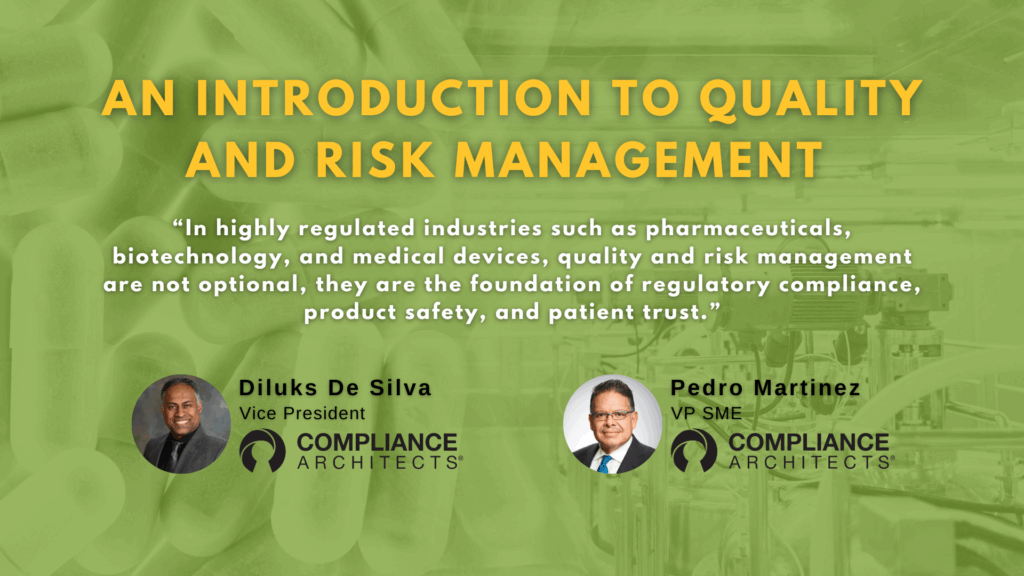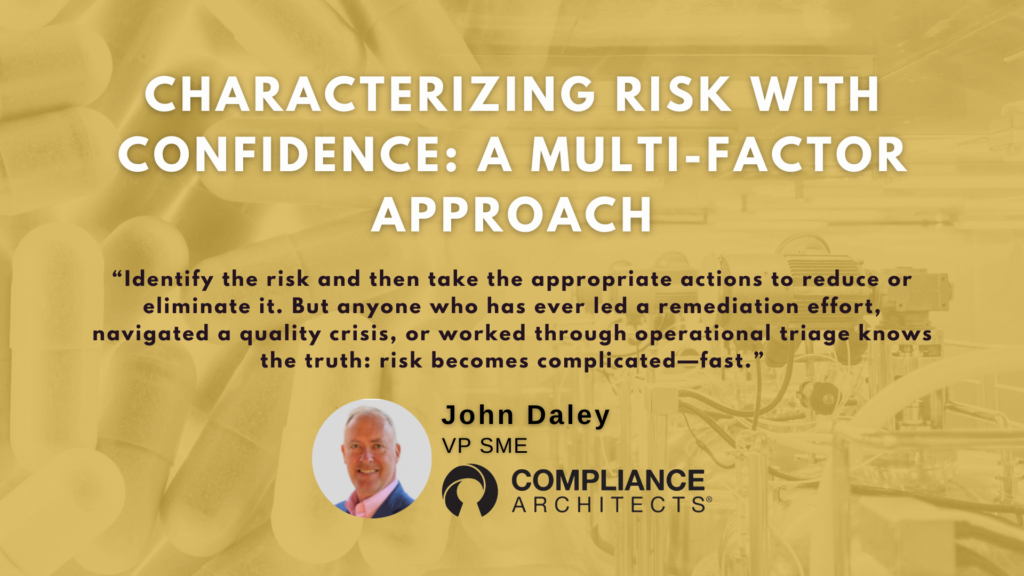Every FDA Warning Letter offers more than a glimpse into individual noncompliance; it reveals systemic risks that can impact the safety of clinical trial participants, the reliability of study data, and the integrity of an organization’s quality systems. Between 2024 and 2025, several Warning Letters were issued that highlight critical and recurring compliance failures in drug and device development, clinical operations, IRB oversight, and sponsor responsibilities.
Here is a breakdown of key lessons from these recent FDA enforcement actions, with expanded insights and recommendations for moving forward.
Table of Contents
1. Informed Consent Failures Undermine Subject Protection
FDA continues to identify alarming gaps in how informed consent is managed and documented, especially in studies involving vulnerable populations such as children and adolescents.
In one case, pediatric subjects were enrolled without legally effective parental or guardian consent. Instead, relatives such as siblings and uncles signed the consent forms. The correct parental consent was obtained months after subjects were enrolled and randomized, a clear violation of 21 CFR Part 50. In another example, clinical site staff enrolled subjects who did not meet critical exclusion criteria (e.g., BMI >30), exposing participants to risk and undermining protocol compliance.
Why It Matters:
Informed consent is not just a signature; it is a process that ensures individuals (or their legal representatives) understand the risks, benefits, and alternatives to participation. Failing to obtain and document this consent before study procedures puts the entire trial at risk, ethically, legally, and scientifically.
What You Can Do:
- Implement real-time validation checks for age, legal guardianship, and inclusion/exclusion criteria at screening.
- Require dual verification for vulnerable populations (e.g., pediatric assent + guardian permission).
- Train investigators and research coordinators on 21 CFR Part 50 and how to distinguish “assent,” “consent,” and “permission.”
2. Data Integrity Begins with Real-Time Documentation
Several letters revealed data fabrication risks tied to delayed or retroactive documentation. In one case, more than 140 primary efficacy assessment scores were entered days to weeks after the visits—without source documentation—and in some cases based on memory. Even more concerning, electronic audit trails showed that data entry times and dates were later edited, undermining the trustworthiness of the trial data.
Another inspection found that handwritten source records had been destroyed prior to the required two-year post-approval retention period.
Why It Matters:
Retrospective data entry, altered timestamps, and lost source documentation are all red flags for data falsification or fabrication. These issues don’t just compromise the integrity of a trial, they can call into question the entire development program.
What You Can Do:
- Enforce contemporaneous documentation policies: “If it’s not documented at the time of the event, it didn’t happen.”
- Use eSource systems with locked audit trails and automated timestamping.
- Conduct internal audits to verify real-time documentation compliance.
3. IRBs Must Demonstrate More Than Minimal Oversight
A Warning Letter to an institutional IRB revealed long-standing, uncorrected deficiencies in informed consent review, IRB documentation, and membership records. The IRB failed to ensure consent forms included:
- FDA inspection disclosures
- Subject compensation details
- Alternative treatment options
The inspection also uncovered meeting minutes that lacked clarity about quorum and voting, discrepancies in membership rosters, and poor delineation of oversight in collaborative research studies.
Why It Matters:
IRBs serve as the ethical and regulatory gatekeepers of human subject research. Inadequate IRB oversight can compromise protections for research participants and place institutions at risk of FDA action—including suspension of clinical trial activity.
What You Can Do:
- Create detailed checklists to verify all elements of informed consent (per 21 CFR 50.25).
- Maintain up-to-date rosters with full credentials, roles, and voting rights.
- Develop MOUs for multi-site or collaborative studies that clearly define IRB responsibilities.
4. Sponsors Cannot Delegate Away Responsibility
In a particularly egregious example, a sponsor of a Class III medical device initiated a significant risk clinical study without submitting an Investigational Device Exemption (IDE) to the FDA. Worse, the sponsor modified official FDA meeting minutes to misrepresent FDA’s position on risk categorization and submitted the altered records to the IRB.
Additional violations included:
- No documented monitoring plan or monitoring reports
- Enrollment of ineligible subjects (e.g., with low platelet counts)
- Inadequate documentation of informed consent
- Unreported adverse device effects (UADEs)
- Inaccurate device accountability records
Why It Matters:
Sponsors are legally and ethically accountable for the oversight of their clinical trials. Failing to secure FDA approvals, falsifying regulatory correspondence, and neglecting monitoring responsibilities endangers patients and jeopardizes market approval.
What You Can Do:
- Submit an IDE for all significant risk devices—do not assume risk category without formal FDA agreement.
- Train your team in proper FDA meeting documentation procedures and communication.
- Require audit-ready documentation for all monitoring activities.
- Implement robust investigational product tracking systems.
5. CAPAs Must Be Specific, Systemic, and Sustainable
A common theme across all Warning Letters was the inadequacy of corrective and preventive actions. In many cases, the FDA acknowledged the receipt of responses but found them insufficient because they lacked depth, rigor, and evidence of organizational learning. FDA repeatedly noted that CAPAs lacked:
- Root cause analysis
- Procedural changes
- Defined implementation plans
- Monitoring metrics to assess effectiveness
In one case, the same IRB deficiencies were cited in 2002, 2012, and again in 2023—highlighting a failure to learn from past mistakes.
Why It Matters:
CAPA is more than just an FDA expectation, it is a hallmark of a mature quality management system. When organizations submit generic responses, reuse outdated templates, or focus solely on short-term fixes, it signals a reactive culture that lacks continuous improvement.
FDA reviewers and inspectors are trained to detect form over substance. A CAPA that lacks credible risk analysis, clear ownership, and a sustainable feedback loop may do more harm than good, potentially eroding FDA’s confidence in the organization’s compliance posture.
Failure to implement effective CAPA systems can lead to:
- Repeat observations during subsequent inspections
- Loss of credibility with regulators and business partners
- Delayed approvals, clinical holds, or enforcement actions
What You Can Do:
- Use tools like the “5 Whys,” Fishbone (Ishikawa) Diagrams, and fault tree analysis to move beyond symptoms and identify systemic root causes.
- Ensure every corrective action is Specific, Measurable, Achievable, Relevant, and Time-bound. Include who is responsible, what will be done, when it will be completed, and how success will be evaluated.
- Don’t wait until implementation is complete. Define how and when you’ll assess whether the CAPA has prevented recurrence. Use metrics, follow-up audits, and stakeholder feedback to validate effectiveness.
- CAPAs should not live in a vacuum. Assign them to process owners, not just QA. Foster accountability across departments and tie CAPA performance to functional KPIs.
- The FDA wants to see a clear CAPA trail: root cause rationale, actions taken, training conducted, and effectiveness evidence. If it’s not documented, it didn’t happen.
- Implement a CAPA review board or quality council that periodically reviews trends, re-opens closed CAPAs if needed, and links CAPA data to management review and risk registers.
Inspection Data Confirms the Trends: What FDA Is Seeing
The themes in these Warning Letters are not isolated findings, they reflect broader patterns across the industry as revealed in FDA’s FY2023 Bioresearch Monitoring (BIMO) External Metrics report.
Across all centers, FDA conducted 1,073 BIMO inspections in FY2023, including clinical investigators (681), IRBs (71), sponsors/CROs (103), and GLP facilities (29). These inspections show clear trends in noncompliance that align with the Warning Letters we’ve reviewed.
Top Inspectional Observations (from FDA Form 483s):
- Clinical Investigators:
- Failure to follow investigational plans and Form FDA 1572 requirements
- Inadequate case history records and safety reporting
- Inadequate accountability and/or control of the investigational product
- Informed consent deficiencies
(Consistent with cases involving protocol deviation and missing legal guardian consent)
- IRBs:
- Inadequate documentation of meetings, voting, and quorum
- Failure to conduct initial and/or continuing review of research
- Failure to keep members of the IRB advised of research proposals that have been approved under an expedited review procedure
- Failure to follow FDA regulations regarding expedited review procedures
- Missing compensation disclosures and FDA inspection statements in ICFs
(Echoed in recent IRB Warning Letters with repeat observations over decades)
- Sponsors and CROs:
- Failure to properly monitor investigations
- Failure to meet the abbreviated requirements for investigational device exemptions (IDEs)
- Failure to maintain and/or retain adequate records in accordance with 21 CFR 312.57; accountability for the investigational product; Investigator Statement (Form FDA 1572); Financial disclosures
- Inadequate subject protection; informed consent issues
- Failure to notify FDA of termination of investigator
- Failure to select qualified investigators and/or monitors, ensure proper monitoring of the study and ensure the study is conducted in accordance with the protocol and/or investigational plan.
- Missing IND/IDE submissions and accountability records
(Clearly reflected in recent enforcement actions for unapproved SR device studies and data misrepresentation)
Final Thoughts: Preventive Compliance Is the Best Strategy
These Warning Letters share common themes, poor documentation, weak oversight, non-compliance with protocol or informed consent requirements, and inadequate follow-through on CAPAs. Each letter is a reminder that inspection readiness is not a once-a-year activity—it’s a daily mindset.
If your organization:
- Hasn’t reviewed SOPs in over a year…
- Has staff unfamiliar with 21 CFR 50/56/312/812…
- Can’t produce audit-ready documentation within 24 hours…
Then now is the time to act—before FDA knocks on your door.
Our Take at Compliance Architects
We see these Warning Letters not as failures, but as opportunities to learn and lead. Whether you are an investigator, IRB, sponsor, or CRO, strengthening your quality system today can prevent costly missteps tomorrow.
Let’s build systems that protect patients, safeguard data, and stand up to scrutiny. Let’s elevate compliance—together.
Contact us using the contact form below.
References: Recent FDA Warning Letters Reviewed
- FDA Warning Letter to Clinical Investigator (March 25, 2025) – Objectionable conditions in obtaining informed consent for pediatric subjects, including failure to verify legal guardianship.
[Ref: FDA Ref. No. 25-HFD-45-01-01]
(Formerly titled: Americo F. Padilla, M.D.) - FDA Warning Letter to Clinical Investigator (April 28, 2025) – Enrollment of ineligible subjects based on BMI, reflecting failure to adhere to investigational plan.
[Ref: FDA Ref. No. 25-HFD-45-04-01]
(Formerly titled: Nana Barseghian, M.D.) - FDA Warning Letter to Clinical Investigator (May 29, 2024) – Delayed and undocumented data entry, destruction of source records, and contradictory explanations impacting data integrity.
[Ref: FDA Ref. No. CBER 24-671405]
(Formerly titled: Konrad Rejdak, M.D., Ph.D.) - FDA Warning Letter to Academic IRB (June 21, 2024) – Failure to include required consent elements, recurring documentation issues, and inadequate IRB membership records.
[Ref: FDA Ref. No. CBER-24-663218]
(Formerly titled: Massachusetts Institute of Technology COUHES IRB) - FDA Warning Letter to Sponsor (March 24, 2025) – Initiating a significant risk device study without an IDE, misrepresenting FDA communications to IRB, and failure to monitor or report adverse events.
[Ref: FDA Ref. No. MARCS-CMS 697777]
(Formerly titled: United Health Products, Inc.) - FDA Bioresearch Monitoring (BIMO) Program – FY2023 External Metrics Report
Comprehensive summary of FDA inspection volumes, classifications, and most common Form 483 observations across Clinical Investigators, IRBs, Sponsors/CROs, GLP, and BA/BE studies.
FDA Office of Regulatory Affairs and Product Centers (CBER, CDER, CDRH, CVM, CFSAN)





